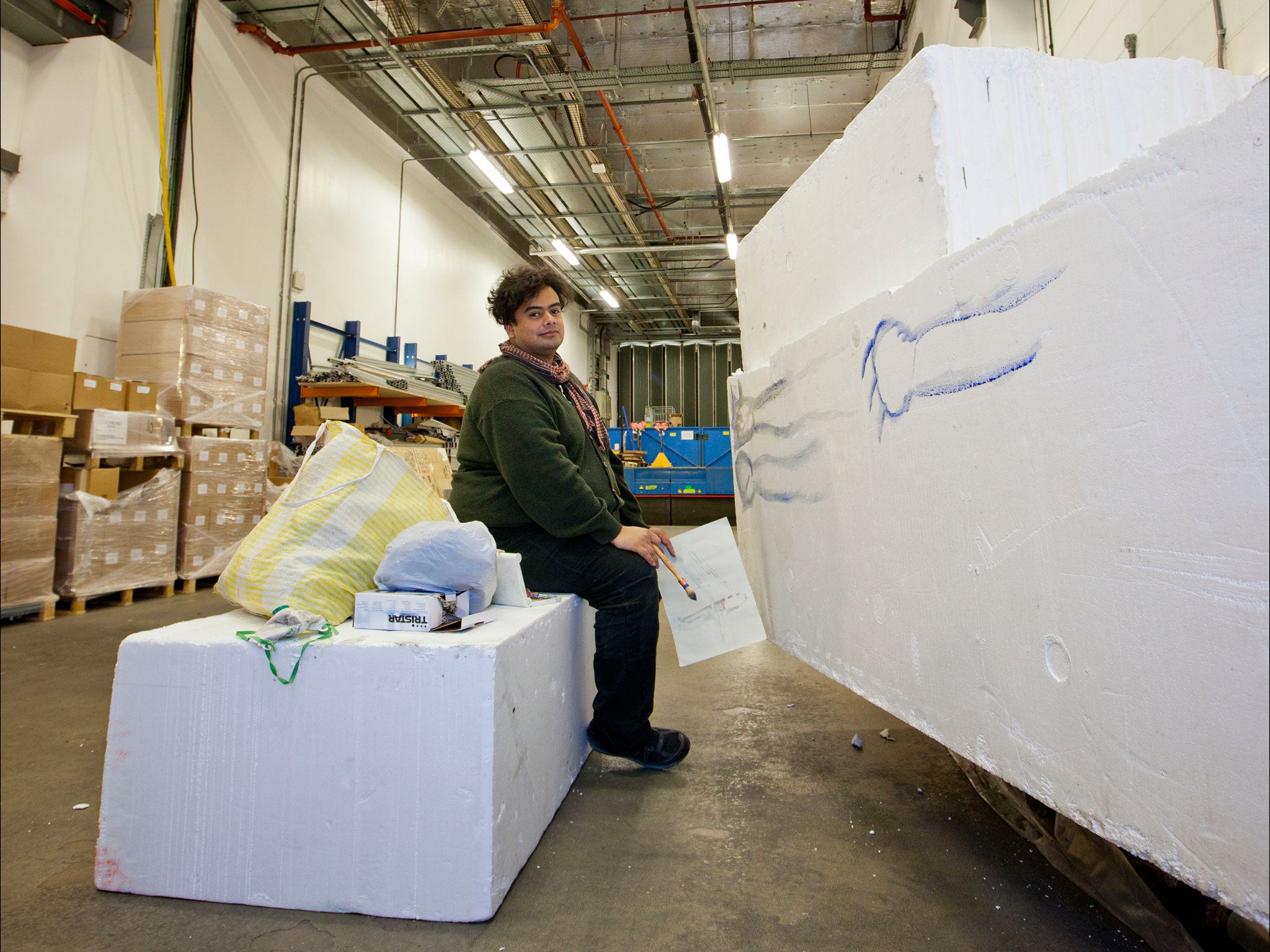Naufus Ramírez-Figueroa: 'At the end, all of the sculptures are destroyed. That is kind of satisfying'
Karen Wright meets the Guatemalan artist in his temporary studio - the loading bay of Tate Modern in London

Your support helps us to tell the story
From reproductive rights to climate change to Big Tech, The Independent is on the ground when the story is developing. Whether it's investigating the financials of Elon Musk's pro-Trump PAC or producing our latest documentary, 'The A Word', which shines a light on the American women fighting for reproductive rights, we know how important it is to parse out the facts from the messaging.
At such a critical moment in US history, we need reporters on the ground. Your donation allows us to keep sending journalists to speak to both sides of the story.
The Independent is trusted by Americans across the entire political spectrum. And unlike many other quality news outlets, we choose not to lock Americans out of our reporting and analysis with paywalls. We believe quality journalism should be available to everyone, paid for by those who can afford it.
Your support makes all the difference.For the next few days Naufus Ramírez-Figueroa's studio will be the loading bay of Tate Modern in London. The Guatemalan artist has recently been squatting in the conference room of the Gasworks studios, too making the sculptures for his show.
Born in 1978, his childhood was shadowed by civil war and although he has studied and lived abroad in Canada and the United States, he remains firmly a man from Guatemala living with his history.
"I was always attracted to artists' materials as a child," he says. "One of my uncles was dating a ceramicist when I was six and I wanted to use the clay but they would not let me. And I thought 'fuck you'."
He became interested in performance art after reading about the Surrealists – "I was interested in acts like Yves Tanguy eating spiders and these kinds of things" – and studied in Chicago as it was one of few courses that offered performance art. "I remember when I was 19 asking someone how do you become performance artist. They said the only way is by doing it, so I started doing it."
The first time he performed internationally was in Costa Rica. "I think people were disappointed that I did not represent Guatemala," he recalls. "So there was a bit of a question at a talk whether I should be dancing Guatemalan folk dances."
He is clear that he is no political activist. "As an artist it is not like I am trying to tell you a story or educate you on what was happening in my country. At the end of the day I am just making images."
We talk about his performance at Tate this week, which featured props carved from polystyrene with a hot wire, a tool used in set design. "I want this monstrous Kubrick feeling in the hallway. I try to think what it was like, the feeling of waking up from nightmares as a kid."
I wonder if the six children who performed alongside him will have nightmares. "They are children of curators or staff here at the Tate," he replies.
We go with the photographer to see the loading bay, aka his studio. He sits happily on a large polystyrene block and becomes instantly engaged in drawing outlines to cut out later. "I have been doing a lot of sculptures but at the end of the performance all of the sculptures are destroyed. That is kind of satisfying."
'Naufus Ramírez-Figueroa: God's Reptilian Finger', Gasworks, London SE11 (gasworks.org.uk) to 7 February; BMW Tate live performance is available here
Join our commenting forum
Join thought-provoking conversations, follow other Independent readers and see their replies
Comments